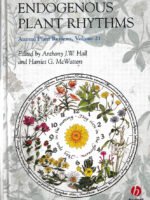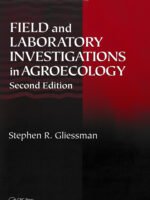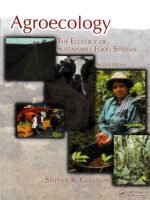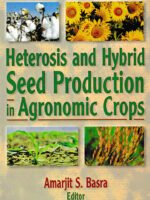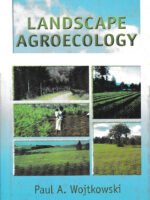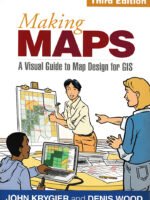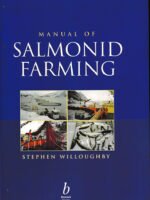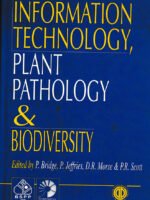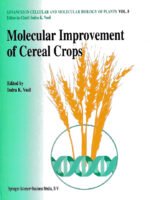-
Annual Plant Reviews, Endogenous Plant Rhythms Volume 21
₹9,356.00This book provides a contemporary overview of endogenous plant rhythms for researchers and professionals in the plant sciences. It will also serve as a valuable source of reference for the wider circadian community.
₹28,350.00 -
Efficient Preparations of Fluorine Compounds
₹5,246.00The definitive guide to creating fluorine-based compounds―and the materials of tomorrow
Discovered as an element by the French chemist Henri Moissan in 1886, through electrolysis of potassium fluoride in anhydrous hydrogen fluoride―”le fluor,” or fluorine, began its chemical history as a substance both elusive and dangerous. With a slight pale yellow hue, fluorine is at room temperature a poisonous diatomic gas. Resembling a spirit from a chemical netherworld, fluorine is highly reactive, difficult to handle, yet very versatile as a reagent―with the power to form compounds with almost any other element.
₹12,199.00 -
Food Safety of Proteins in Agricultural Biotechnology
₹6,732.00With contributions from internationally recognized experts, Food Safety of Proteins in Agricultural Biotechnology comprehensively addresses how toxicology testing of proteins should be accomplished and how protein safety assessments should be carried out. Beginning with a background on protein biology, the book delineates the fundamental differences among proteins and small molecular weight chemicals that impact their safety assessment. It discusses the life cycle of proteins and explains why some protein toxins exert toxic effects and others do not.
₹20,399.00 -
Agroecology: Field and Laboratory Investigations in Agroecology
₹1,008.00Agroecology is defined as the application of ecological concepts and principles to the design and management of sustainable food systems. Offering step-by-step guidance for structured investigation, Field and Laboratory Investigations in Agroecology, Second Edition reviews ecological concepts and principles in an agricultural setting and provides in-depth, practical experience.
₹2,799.00 -
Agroecology: The Ecology of Sustainable Food Systems
₹1,938.00Providing the theoretical and conceptual framework for this continually evolving field, Agroecology: The Ecology of Sustainable Food Systems, Second Edition explores environmental factors and complexities affecting agricultural crops and animals. Completely revised, updated, and reworked, the second edition contains new data, new readings, new issues and case studies, and new options. It includes two completely new chapters, one on the role of livestock animals in agroecosystems and one on the cultural and community aspects of sustainable food systems.
₹5,699.00 -
Agriculture in the Tropics
₹7,580.00Agriculture in the Tropics is one of the most successful and widely read books in the Tropical Agriculture Series and offers a general account of all the factors that affect agriculture in the tropics. It details the economic and physical factors that affect tropical agriculture and discusses land management and the different types of farming systems in practice
₹23,689.00 -
Fertilization
₹2,527.00This edition provides the reader with an introduction to this subject. During the past five years there has been a virtual explosion of information on the different phases of fertilization.This book should be of interest to advanced undergraduates and graduate students in developmental biology, zoology and cell biology; researchers entering the field.
₹7,657.00 -
Monitoring Forest Biodiversity Improving Conservation through Ecologically-Responsible Management
₹6,073.00The fate of much of the world’s terrestrial biodiversity depends upon our ability to improve the management of forest ecosystems that have already been substantially modified by humans. Monitoring is an essential ingredient in meeting this challenge, allowing us to measure the impact of different human activities on biodiversity and identify more responsible ways of managing the environment. Nevertheless many biodiversity monitoring programs are criticised as being little more than ‘tick the box’ compliance exercises that waste precious resources and erode the credibility of science in the eyes of decision makers and conservation investors. The purpose of this book is to examine the factors that make biodiversity monitoring programs fail or succeed.
₹13,950.00 -
Heterosis and Hybrid Seed Production in Agronomic Crops
₹2,719.00Heterosis and Hybrid Seed Production in Agronomic Crops discusses how heterosis or “hybrid vigor” has played a major role in improving crop productivity and quality in order to feed the ever-increasing human population, particularly in developing countries. Plant breeders, agronomists, seed producers, and farmers will discover why the development of hybrids in the world’s major food crops and why the methods of hybrid seed production are critical for achieving this goal. This landmark book deals with heterosis and hybrid seed production of major agronomic crops such as wheat, rice, maize, sorghum, cotton, sunflower, and rapeseed.
₹6,110.00 -
Landscape Agroecology
₹3,655.00This book illuminates the principles behind these triumphs, bringing this local knowledge into the mainstream. Landscape Agroecology will familiarize you with the concepts and terminology needed to understand this exciting new field: complementarity–usually defined in terms of plant-plant growth–expanded to include the rural countryside desirable agroecosystems properties–what an agroecosystem needs in order to overcome landscape stresses such as drought, flooding, insect infestation, etc.
₹10,750.00 -
Making Maps: A Visual Guide to Map Design for GIS
₹2,748.00Lauded for its accessibility and beautiful design, this text has given thousands of students and professionals the tools to create effective, compelling maps. Using a wealth of illustrations—with 74 in full color—to elucidate each concisely presented point, the revised and updated third edition continues to emphasize how design choices relate to the reasons for making a map and its intended purpose.
₹5,050.00 -
Invasive Plants and Forest Ecosystems
₹8,370.00As the worldwide human population explodes and trade becomes increasingly globalized, the transboundary movement of plant species from their place of origin to foreign regions is escalating and expected to experience continued growth in the coming decades. Invasive Plants and Forest Ecosystems takes an informed and integrated approach to the current onslaught of invasive species, spotlighting the tremendous challenges they pose for natural resource managers charged with the maintenance of biological diversity and the sustainable production of forest wealth. It addresses the havoc these alien invaders are wrecking on native forest ecosystems and the staggering $300 billion annually in damage and control costs they incur.
₹19,299.00 -
Manual of Salmonid Farming
₹6,627.00This new handbook is designed as a benchmark reference to the many technical aspects of salmon and trout farming, the varied issues of growth and development, operational and administrative concerns, disease prevention and treatment and much, much more.
₹20,708.00 -
Investment Strategies for Agriculture and Natural Resources: Investing in Knowledge for Development
₹2,195.00The 1990s have seen significant changes in the financing and organization of research in agriculture and natural resources. In response the World Bank, in collaboration with the Australian Centre for International Agricultural Research, the UK Department for International Development, the International Food Policy Research Institute and Deutsche Gesellschaft für Technische Zusammenarbeit, initiated a series of regional and country case studies to examine the impact of the changes.
₹6,455.00 -
Information Technology, Plant Pathology and Biodiversity
₹2,708.00Information technology is revolutionizing the handling of biological information. The British Society for Plant Pathology (BSPP) has been at the forefront of several initiatives in handling information electronically, and the Systematics Association has a long-standing involvement in computer-based species identification.
₹8,205.00 -
Handbook of Agricultural Geophysics
₹6,369.00Precision farming, site infrastructure assessment, hydrologic monitoring, and environmental investigations — these are just a few current and potential uses of near-surface geophysical methods in agriculture.
₹19,299.00 -
Genetic Resources, Chromosome Engineering, and Crop Improvement Vol-4
₹7,075.00Summarizing landmark research, Volume 4 of this essential seriesfurnishes information on the availability of germplasm resources that breeders can exploit for producing high-yielding oilseed crop varieties.
₹21,440.00 -
Encyclopedia of Animal Science
₹5,415.00Containing case studies that complement material presented in the text, the vast range of this definitive Encyclopedia encompasses animal physiology, animal growth and development, animal behavior, animal reproduction and breeding, alternative approaches to animal maintenance, meat science and muscle biology, farmed animal welfare and bioethics, and food safety.
₹16,410.00 -
Molecular improvement of cereal crops: Vol 5 (Advances in Cellular and Molecular Biology of Plants)
₹7,540.00From the pre-historic era to modern times, cereal grains have been the most important source of human nutrition, and have helped sustain the increasing population and the development of human civilization. In order to meet the food needs of the 21st century, food production must be doubled by the year 2025, and nearly tripled by 2050. Such enormous increases in food productivity cannot be brought about by relying entirely on conventional breeding methods, especially on less land per capita, with poor quality and quantity of water, and under rapidly deteriorating environmental conditions.
₹23,562.00 -
Molecular Systematics and Plant Evolution
₹3,249.00The international panel of contributors are all respected systematists and evolutionary biologists, who have brought together a wide range of topics from the forefront of research while keeping the text accessible to students. It has been written for senior undergraduates, postgraduates and researchers in the fields of botany, systematics, population / conservation genetics, phylogenetics and evolutionary biology.
₹9,846.00
- Home
- Categories
- Architecture
- Agriculture and Farming
- Business & Management
- Engineering
- Fashion & Textiles
- General and References
- Humanities & Social Science
- Islam
- Library Science
- Literature & Literary Studies
- Mathematics & Statistics
- Media, Information & Communication Industries
- Medicine
- New Arrivals
- On Sale
- Science & Technology
- Sports
- Top Selling
- Travel & Tourism
- Annual Reviews
- Exclusive
- Blog
- Others
